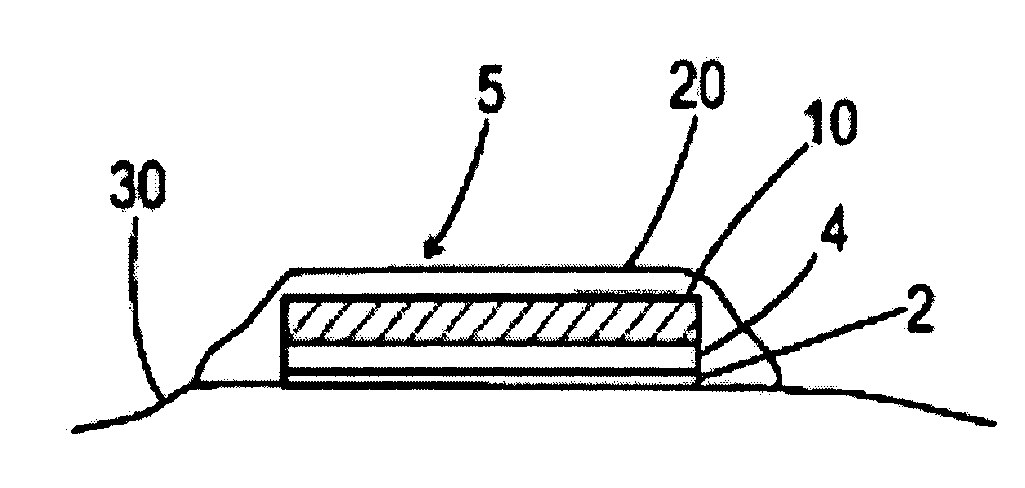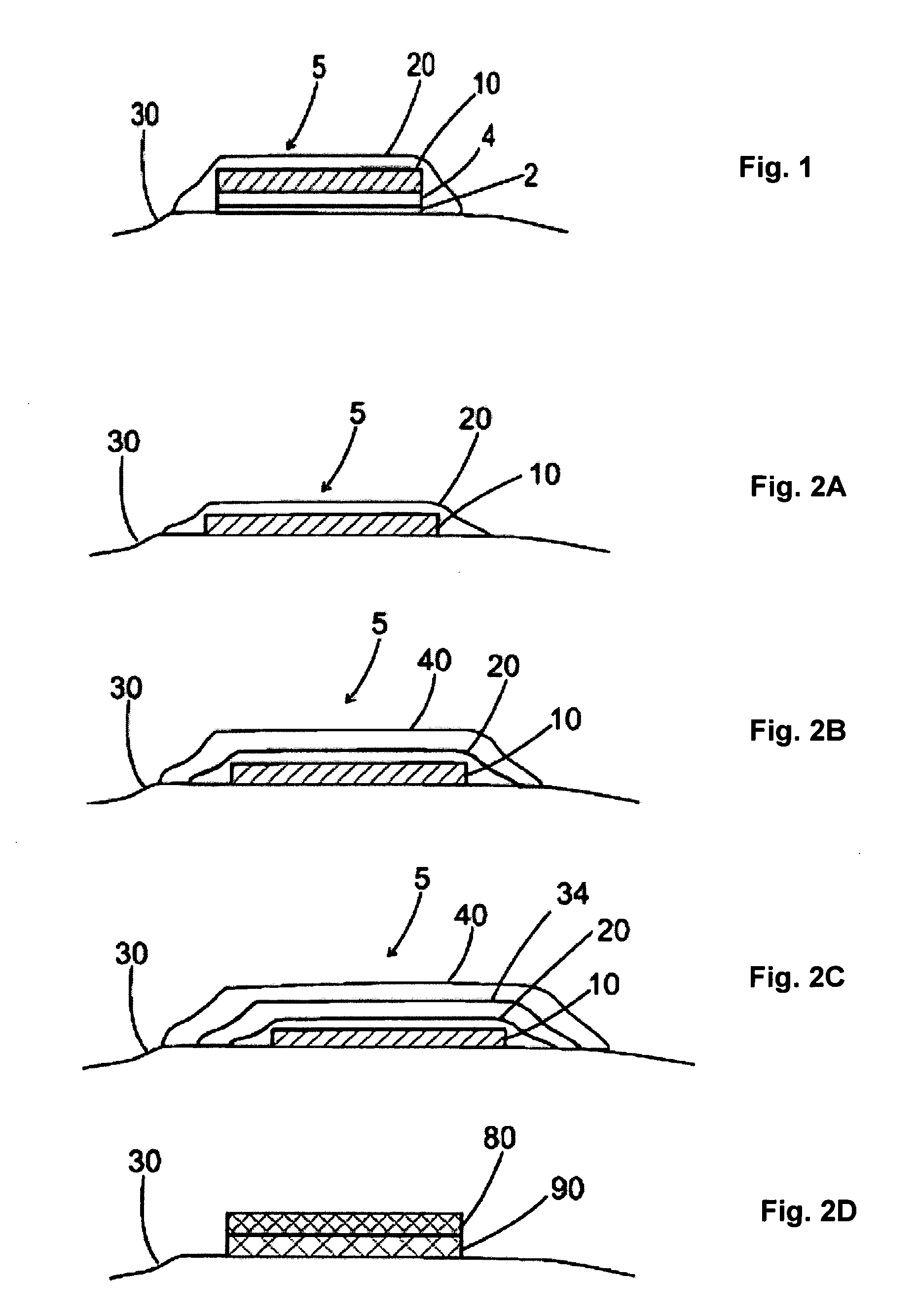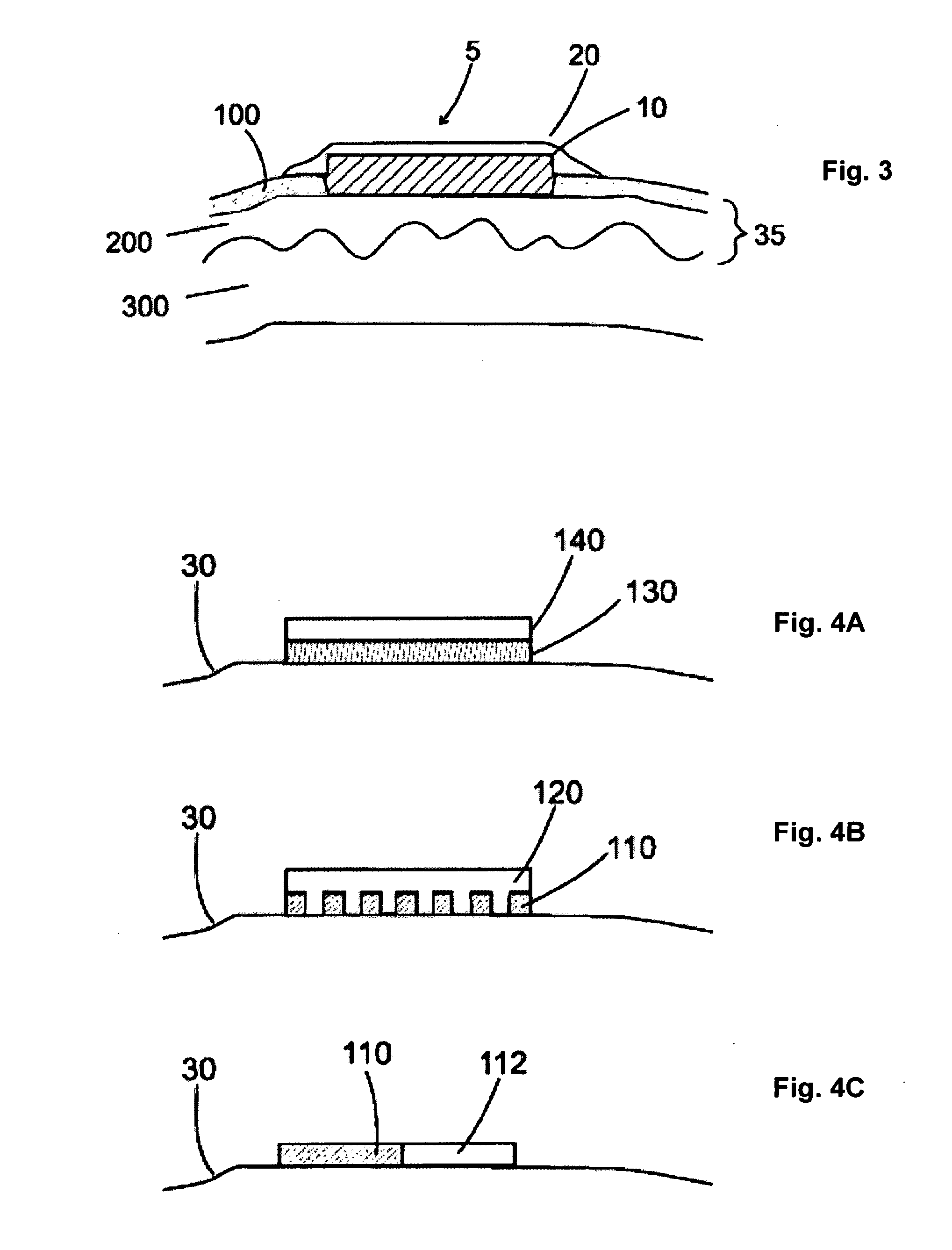Drug-delivery patch comprising a dissolvable layer and uses thereof
a technology of dissolvable layer and drug delivery patch, which is applied in the field of biomedical engineering, biochemistry and surgical procedures, can solve the problems of reducing the stability of active components, and reducing the effectiveness of antibacterial properties
- Summary
- Abstract
- Description
- Claims
- Application Information
AI Technical Summary
Benefits of technology
Problems solved by technology
Method used
Image
Examples
example 1
Formulation of the Dissolving-Layer Patch
[0098]The dissolvable layer of the drug-delivery patch, is largely a binary formulation consisting of a water-soluble polysaccharide polymer and water, with a small amount of a plasticizer and surfactant. Antigen is added to the patch material when it is in liquid form, and the viscous mixture (monitored by a Brookfield viscometer for quality control) is poured onto a polytetrafluoroethylene plate while drying. The surfactant aids materials dispersion for consistent drawdown during casting. A polyurethane backing is applied to the outer surface of the film. The patch is convenient for dosing, suitable for labeling, and flexible for easy packing, handling and application. The thickness of a typical film ranges from 10-160 μm, and its surface area can be 1 to 20 cm2 of any geometry. Its low dry-tack allows for ease of handling and application. At the same time, the rapid hydration rate (in the presence of moisture) facilitates an almost immedia...
example 2
Other Dissolvable Layer Formulations
[0102]In all aspects of this invention, the film dissolves upon contact with a fluid, e.g., water or interstitial fluid that is released from the treatment site through compromise of the stratum corneum, which in turn releases the active agent into the tissue. The film may be comprised of a hydrocolloid such as pullulan. The film may be comprised of one or more layers, any of which may be comprised further of an emulsifying agent, a solubilizing agent, a wetting agent, a taste modifying agent, a plasticizer, an active agent, a water soluble inert filler, a preservative, a buffering agent, a coloring agent, an aesthetic design, a stabilizer, or a combination thereof.
[0103]Formulations for the dissolvable layer may include 1) fast-dissolving film component such as pullulan, generally 10-95% wt %; 2) a plasticizer for flexibility such as beta-carageenan, generally 0.05-35% wt %; 3) a dissolution modulating agent, e.g. hydroxymethycellulose, generally...
example 3
[0105]SC Ablation with FAST™ and TCI using Hemagluttinin or Recombinant Protective Antigen and Cellulose Type Patch
[0106]The results of a TCI experiment performed without the aid of a dissolvable layer patch is shown in FIG. 12. In this experiment, Influenza H5 Hemagluttinin (HA) or recombinant protective antigen (rPA) were used for immunization of mice following abrasive SC ablation (see United States Publication No. 20040236269). The device used in these experiments oscillates at 840 Hz, with skin-abrasive particles of 60-90 microns and applicator-skin pressures of 10-20 g.
[0107]In general, BALB / c or A / J mice (randomly male and female) were anesthetized, and the dorsal hair shaved and depilated. An approximate 5×8 mm spot was treated with the SC ablation device. Following treatment, an antigen (HA, 3 μg per dose or rPA, 10 μg per dose) incorporated into a patch made up of a 1×1 cm piece of cellulose tissue (e.g. Kimwipe®) covered by a semi-occlusive polyurethane dressing (e.g. 3M®...
PUM
| Property | Measurement | Unit |
|---|---|---|
| Fraction | aaaaa | aaaaa |
| Fraction | aaaaa | aaaaa |
| Fraction | aaaaa | aaaaa |
Abstract
Description
Claims
Application Information
 Login to View More
Login to View More - R&D
- Intellectual Property
- Life Sciences
- Materials
- Tech Scout
- Unparalleled Data Quality
- Higher Quality Content
- 60% Fewer Hallucinations
Browse by: Latest US Patents, China's latest patents, Technical Efficacy Thesaurus, Application Domain, Technology Topic, Popular Technical Reports.
© 2025 PatSnap. All rights reserved.Legal|Privacy policy|Modern Slavery Act Transparency Statement|Sitemap|About US| Contact US: help@patsnap.com



